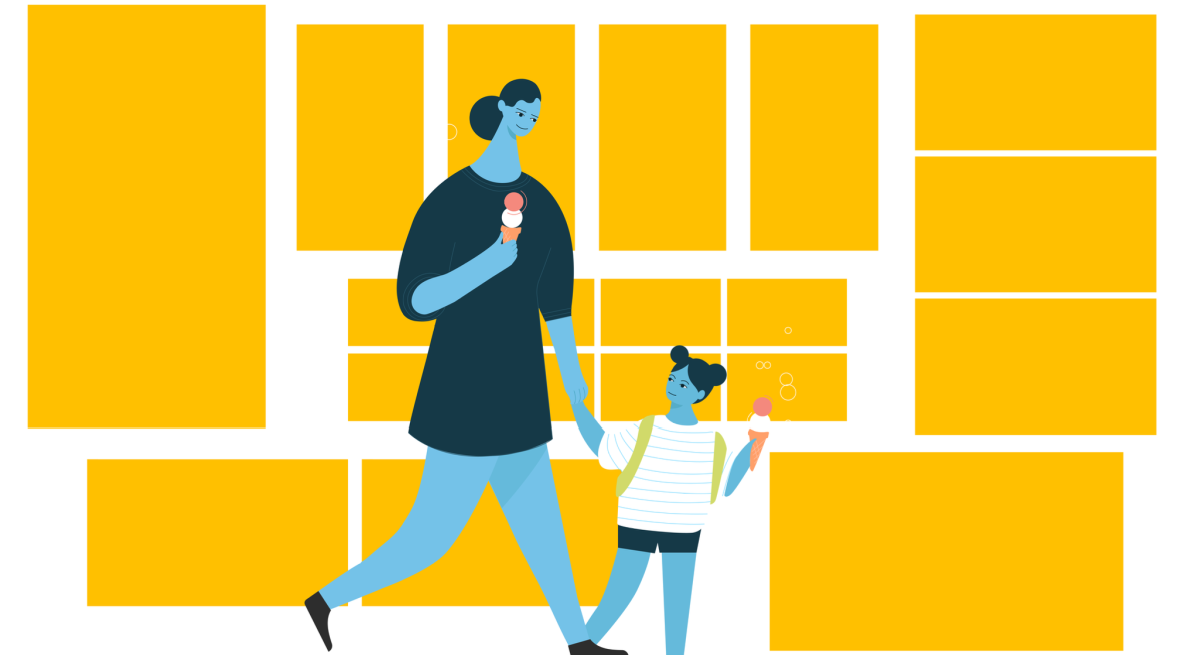Digital du Jour
5 Min Read By Buck Sleeper
Menus are shifting quickly to digital screens, promising operational efficiency and a consistent brand experience from dine-in to drive-thru. Physical menus are a trial to maintain: They need to show multiple day parts, they may not reflect what’s actually available in the kitchen, and they can be impossible to coordinate across more than a few locations. While there are clear benefits to an all-digital menu system, to get the most out them, you must first take a step back to re-examine what your menu means to you.
Your menu: Part love letter, part manifesto, instructions for use and a bill of goods, all rolled into one. No other artifact in your restaurant is more capable of setting the tone or telling your story.
Your menu: Part love letter, part manifesto, instructions for use and a bill of goods, all rolled into one.
In early 2020 our team canvassed menus across the United States. Here’s just a bit of what we saw. Spanish Diner in New York supersizes their specials on a wall-sized slide frieze above the bar, inviting your eye around the well-appointed space and up to the gloss black ceiling (also the underbelly of the neighborhood’s famous High Line). Sweet Green publishes their seasonal specials as a takeaway foldout poster, with no-frills photography and an uncoated paper stock to reflect the raw simplicity of their salads. At Clover in Boston, a knowledgeable host serves up the details of a chickpea fritter from their iPad to a nearby monitor, letting you savor your choices in ultra-HD. At Vespertine in LA, there is no menu at all; each course simply appears in a carefully coordinated sequence of surprises.
Major advances in menu innovation, a field my org has some experience in, have shifted course in the past year as many restaurants have switched to almost entirely off-premise meals. Unable to invite guests indoors, operators hurried to install workarounds such as menu enlargements in shop windows, or standup basic e-commerce online. In the past 12 months, more meals than ever were ordered via app or drive-thru, dramatically narrowing the medium of storytelling, and compressing the time and context in which you’ll decide just what food you’re in the mood for.
Should your menu move to the cloud? If your operations are spread out geographically, or you’re trying to eke out a bit of efficiency, the answer may be Yes. Before investing in technology, however, go back to basics with a purpose-driven strategy.
Cuisine and Concept
- Start with a big helping of raison d'être. What’s the story about why your restaurant exists in the first place? What’s the change you’re looking to see in your neighborhood? In your world? Setting this context early provides a lens through which your customers can better understand your decisions elsewhere and provide some rationale for things that seem out of place like unique ingredients, unfamiliar techniques, or premium prices.
- Dig into the details of what your food is all about. Curious customers will be intrigued by tales of your provision’s provenance. Tell them about the range your chickens used to roam, or the verdant fields from which your peppers and okra were plucked. With a digital menu, motion and video keep it fresh over the day, week, or year.
- You can even show diners a whole new way to choose your food. Honeygrow, the Philadelphia-based fast casual restaurant, for instance, engages customers only through image-rich digital kiosks, collapsing menu, ordering, and check-out into a single experience.
Diner Preference
- Imagine how menus can be personalized, reconfigured, and optimized for specific diner preferences. A digital menu is a versatile menu: Instead of customizing a single order, consider customizing your entire pantry. By applying a personal filter and connecting to a dynamic KDS to handle customizations, every restaurant can be vegetarian, kosher, gluten-free, or vegan. Say goodbye to token dishes.
- Digital menus can reflect modes. In this recent blog post, my co-author Megan Welker and I noted that consumers have four different modes when they shop: Collect, Seek, Comfort, and Connect. This four-part modal approach could be adapted to digital menus. People seeking comfort food would meet a very different menu from those seeking adventurous new dishes.
- The digital menu will allow restaurants to be more sensitive to their patrons. McDonald’s is already testing menu tech that suggests hot or cold beverages based on the weather. Imagine menus that could highlight specific items according to cost, or carbon footprint. Imagine menus that inform a patron which items came from BIPOC suppliers. Want to find out what’s most important to them? Leave a spot for feedback for customers to highlight why they ordered, not just what.
- And we haven’t even pulled up to the idea of dynamic legibility. Future digital menus might well be able to change in their design architecture and event editorial composition when a diner—a specific diner—gets close in line, or in the car. Patrons standing back? Show less information, in bigger text. Standing close? Cluster information near their sightline, with greater detail. More than one customer? Parallel Reality allows for tailored content based on vantage point.
Operational Capacity
- Why not connect menus to sensors in the back of the house: If your menu knows what’s in the cooler, you’d be informed when you had an excess of the evening special and when you about to run out.
- Going a step beyond, it’s not unthinkable that a menu system could be informed by what’s in, and what’s not, the supply chain. In fact, digital menus are the final mile in the delivery of food to customer. Of course, not all parts of your network can or should have the same goods for sale; a centrally controlled system enables greater localization and oversight.
- A digital menu tied into back-of-house systems will inform a restaurant operator about what can be made, based on available equipment and labor. It could act as a kind of hub of in-house intelligence that can not only inform what is possible but can also advise restaurants what should be offered give the resources in the kitchen.
There have never been more options for how augmented menus can come together (we’re talking about screens of all sizes, camera vision, QR codes, voice-recognition). To work fast, work in parallel to define what we’ll do and how we’ll do it. The technologies that enable digital menus, combined with good service design principles, can do much to remove friction from the dining experience. Our recent report on retail Blend Space makes note of the continuum of experiences involved here:

The points is: With a standard issue menu, you get a standard issue meal. Raise your standards with digital menus.
Think your printed menu was difficult to update? Imagine installing thousands of digital screens and content controllers across your entire fleet and then changing your mind. What you want to scale is your business, not your headaches. To get it right, don’t think about menu as an endpoint of digital transformation, but as a manifestation of your hospitality: The promise of great food, just the way you like it.


